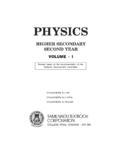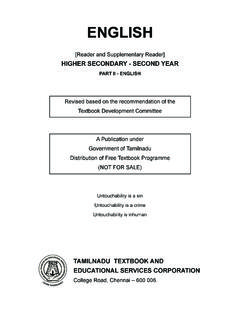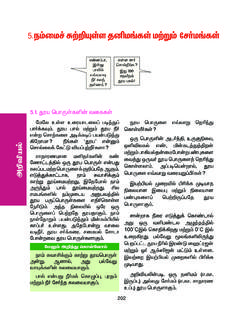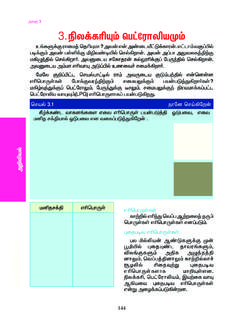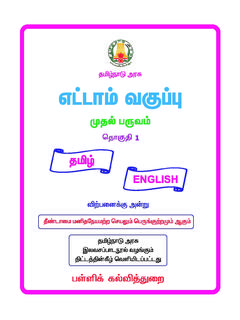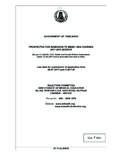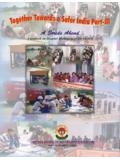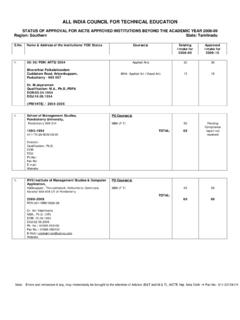Transcription of GEOGRAPHY - Government of Tamil Nadu, India
1 GEOGRAPHYHIGHER SECONDARY - SECOND YEARA publication under Government of TamilnaduDistribution of Free Textbook Programme(NOT FOR SALE) Untouchability is a sin Untouchability is a crime Untouchability is inhuman tamilnadu TEXTBOOK AND EDUCATIONAL SERVICES CORPORATION College Road, Chennai - 600 Government of tamilnadu First Edition - 2005 Reprint - 2017 ChairpersonT.
2 Vasantha KumaranProfessor of GeographyDepartment of GeographyUniversity of Madras,Chennai - 600 SubramaniamLecturer in GeographyDIET, Namakkal,Namakkal District - 637 Srinivasan E. KaliappanLecturer in GEOGRAPHY PG Teacher in GeographyDIET, Kotagiri Dr. GMTTV Hr. Sec. SchoolThe Nilgiris - 643 217 Sowkarpet, Chennai - 600 Vatchala Teacher in GeographySt. Paul s Higher Secondary SchoolVepery, Chennai - 600 book has been prepared by the Directorate of School Education on behalf of the Government of TamilnaduThis book has been printed on 60 PaperPrinted by Offset at:iiiiiINTRODUCTION GEOGRAPHY takes three approaches to provide explanations for its concepts and functions.
3 Spatial Analysis is a means of explaining locational differences. Ecological Analysis speaks of Man-Environment relations and they determine the dynamics of ecosystems. The third approach of Regional Complex Analysis facilitates areal and ecosystem interrelations and integrates the concepts of other approaches. The approach that is neutral and current and is suitable for analysing events of today, especially those of ecosystems, is ecological analysis. Lessons in this book have been written with an ecosystem perspective. There are 6 units and 14 lessons, with 10 lessons of theory and 4 lessons of practicals.
4 Unit 1 is titled Biosphere and has 2 lessons, the first dealing with the components of the biosphere, namely, Plants, Animals and Humans while the second focuses on the Human Potential. The first chapter elaborates on the various ecosystems even as it speaks of the biomes, connecting the plant and animal kingdoms. The second chapter deals in great detail with the growth, distribution and density, structure and composition and population explosion. Units 2 and 3 are titled Human-Made Ecosystems I and II and consist of 3 and 2 chapters, respectively. Settlements, industries and trade are dealt with in great depth in the lessons 3-5, whereas transport and communications and space technologies (remote sensing and Indian space research programmes) are discussed in lessons 6 and 7.
5 In the two units, the emphasis is on human-made ecosystems and how they operate as systems of input-process-output in a general sense. Unit 4 is Environmental Degradations, with global freshwater (lesson 8: quality, quantity, supply and demand and depletion of underground water), natural disasters (lesson 9: landslides, earthquakes, volcanoes, floods and droughts and desertification) and mitigation and management. Environmental management is dealt with in terms of conservation and resources management (lesson 10: water management, rainwater harvesting and conservation of resources).
6 Unit 5 is of map interpretation and surveying. Lesson 11 deals with topographical map interpretation as well as weather map interpretation. This chapter provides additional information to the information provided in Plus 1 GEOGRAPHY textbook. Surveying (Lesson 12) is treated in simple terms in respect of meaning and procedures but two of the specific types of surveys, namely, prismatic compass survey and Indian clinometer survey. While the former is a instrument that helps with surveying land and features using bearings, the later measures height and also helps with measuring volume of trees, for example.
7 The importance of the two lessons in unit 5 lies in the new exposures the students will get, even though they may not actually be able to practice surveying and map interpretation for want of equipment and Unit 6 is of geographical information systems, what is generally abbreviated as GIS, and global positioning systems or GPS. The two lessons, 13 and 14, put the very latest of technological developments in the hands of the young students of Plus 2 and introduces them to a capability that GEOGRAPHY possesses which no other social science is capable of, at the moment.
8 The practical lessons are by way of improving the skills and capabilities of the students and hence teachers must take extra care to learn, understand and teach / impart with greater efficiency. Happy reading and best T. Vasantha KumaranSeptember 2004 Chairperson: GEOGRAPHY XII Textbook Sub-CommitteeivvCONTENTPART - I : THEORYUNIT - 1 BIOSPHERE1. Plants, Animals and Humans 12. The Human Potential 16 UNIT - 2 HUMAN - MADE ECOSYSTEMS - I3.
9 Settlement Systems 314. Industrial Systems 425. Trade Systems 52 UNIT - 3 HUMAN - MADE ECOSYSTEMS - II6. Transport and Communication Systems 617. Space Technologies 76 UNIT - 4 ENVIRONMENTAL DEGRADATIONS / MANAGEMENT8.
10 Global Freshwater 879. Natural Disasters 10710. Conservation and Resource Management 132 PART - II : PRACTICALSUNIT - 5 MAP INTERPRETATION AND SURVEYING11. Map Interpretation 15012. Surveying 163viPBUNIT - 6 GEOGRAPHICAL INFORMATION SYSTEMS13.
